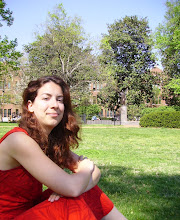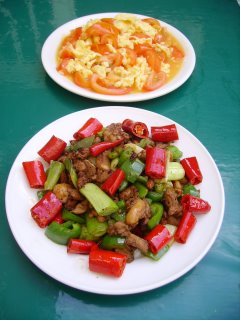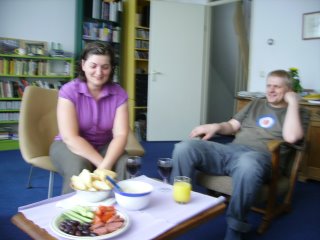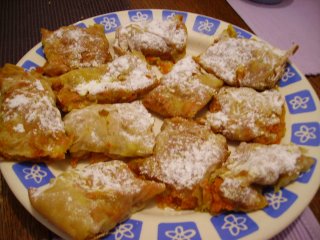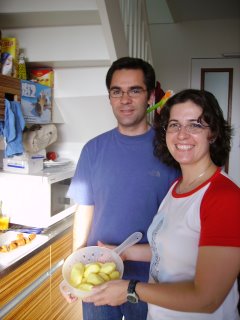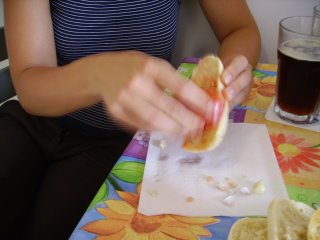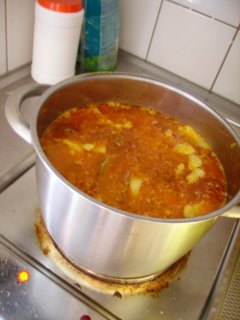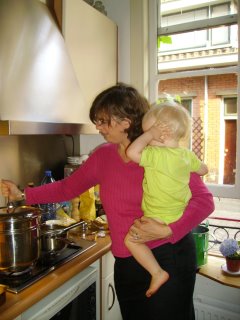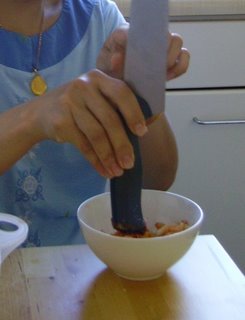 An has lived in the Netherlands for three years now, and has already developed a taste for zuurkool, otherwise known as sauerkraut. She likes to add sugar, thus creating a nice sweet and sour taste. An:"My parents are from the North of Vietnam, and that is where I grew up. In the North, we prefer our food to be quite simple. The predominant taste is salty. I have lived in the South too, where they like sweet dishes. And my husband is from the centre, where the food is spicy!"
An has lived in the Netherlands for three years now, and has already developed a taste for zuurkool, otherwise known as sauerkraut. She likes to add sugar, thus creating a nice sweet and sour taste. An:"My parents are from the North of Vietnam, and that is where I grew up. In the North, we prefer our food to be quite simple. The predominant taste is salty. I have lived in the South too, where they like sweet dishes. And my husband is from the centre, where the food is spicy!"Today, the dish is both spicy and a bit sweet. The beef salad, Bò Bóp Thâú, is perfect summer food. The marinated and fried strips of beef are added to a colourful mix of thinly sliced bell peppers.
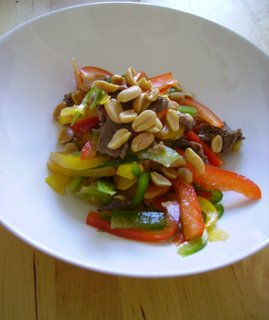 It's funny to see how An crushes the garlic with the butt of a big knife, instead of with a garlic press. The technique reminds me of the mortar and pestle they use in Indonesia (and elsewhere) to make sambal. The salad itself is eaten by heaping a bit of it on a pieace of krupuk (shrimp cracker) and popping that in your mouth.
It's funny to see how An crushes the garlic with the butt of a big knife, instead of with a garlic press. The technique reminds me of the mortar and pestle they use in Indonesia (and elsewhere) to make sambal. The salad itself is eaten by heaping a bit of it on a pieace of krupuk (shrimp cracker) and popping that in your mouth.In Vietnam An teaches at the university, and now she is doing her Ph.D. here, to gain practical experience for the lab that has just been built back home. The Ph.D. is being paid for by Vietnam and hopefully will guarantee more job stability in the future. I am impressed by the big sacrifice she is making by leaving her husband and young daughter behind...she only gets to see them once a year.
Yes, An says, Vietnam is still a poor country, but things are changing. The last 15 years or so, the country has modernized a bit, becoming more democratic and more open to foreign investments. Why do foreign companies like Vietnam? An: "Well, my guess is it's because the Vietnamese work very hard, are friendly and don't complain!"
"A good thing is that the Vietnamese do not only do the low level work. There is a construction
 that involves companies employing locals in management positions as well. After five to ten years, only the chief manager is foreign, and after twenty years, the company should be completely Vietnamese!"
that involves companies employing locals in management positions as well. After five to ten years, only the chief manager is foreign, and after twenty years, the company should be completely Vietnamese!"If this really works out that way, it does seem like a good development. An's daughter will probably grow up in a very different Vietnam.
Click here for the "French inspired" recipe for beef salad: Vietnamese Bò Bóp Thâú
